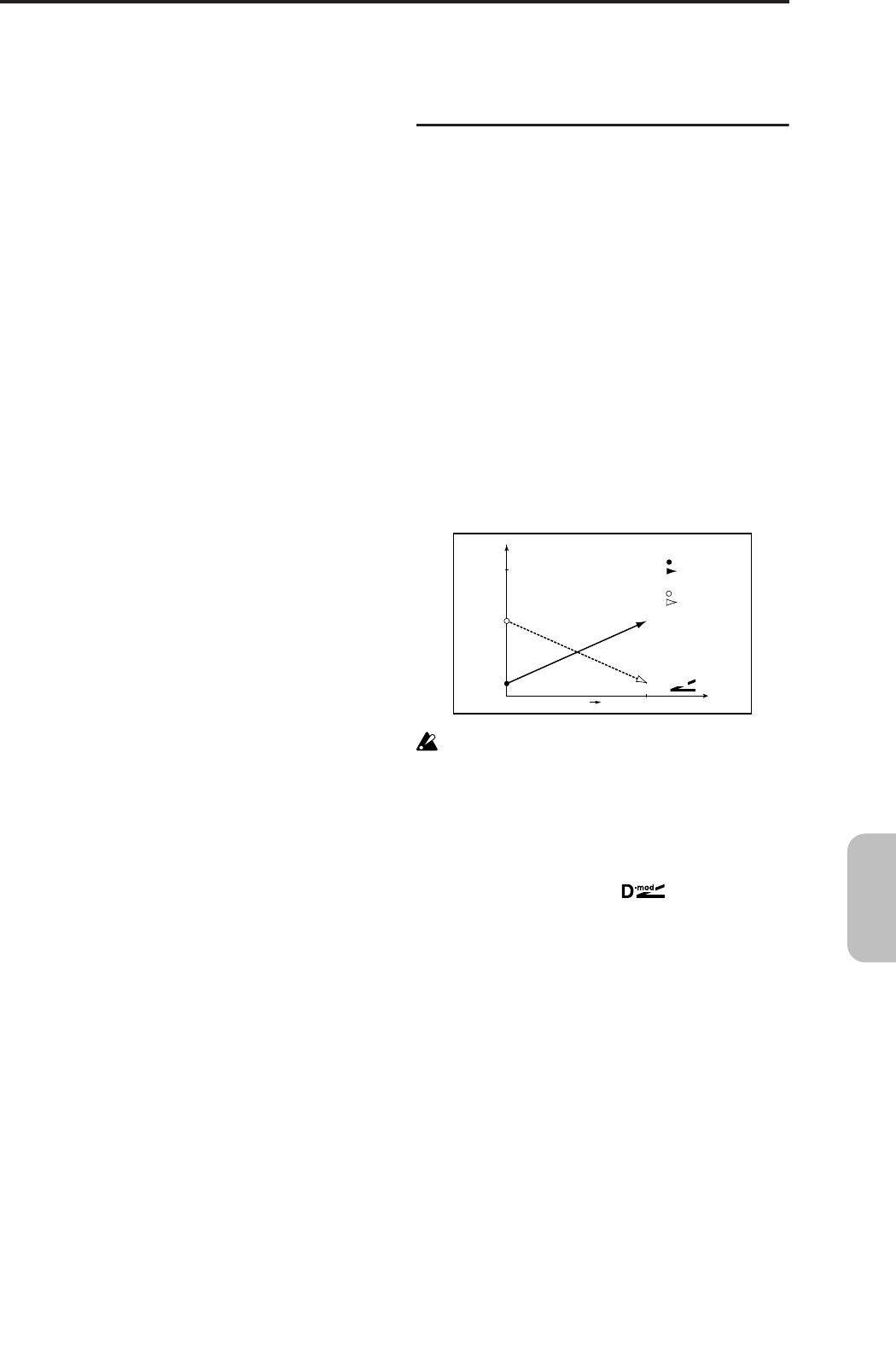
157
Appendices
LFO Frequency (PROG 3–1b)
The frequency of LFO 1 or 2 can be controlled by EG, key-
board tracking, controllers, or tempo etc., You can even use
the LFO2 frequency to modulate the LFO1 frequency.
If “Int (AMS 1/2 Intensity)” is set to a value of 16, 33, 49, 66,
82, or 99, the corresponding frequency can be multiplied by
a maximum of 2, 4, 8, 16, 32, or 64 times (or divided by 1/2,
1/4, 1/8, 1/16, 1/32, 1/64).
•
X50: If you set “AMS 1/2 (Freq. AMS 1/2)” to
Mod.Whl#01 and set “Int (AMS 1/2 Intensity)” to +16,
moving the [MOD] wheel in the up direction will
lengthen the LFO cycle to a maximum of double its
original length. If you set “Int (AMS 1/2 Intensity)” to
–16, moving the [MOD] wheel in the up direction will
shorten the LFO cycle to as little as half of its original
length.
•
microX: Select JS+Y#01 for “AMS1/2 (Freq. AMS1/
2),” and set “Int (AMS1/2 Intensity)” to +16. When you
move the joystick in the +Y direction, the LFO frequency
will be increased by a maximum of 2 times. If you set
“Int (AMS1/2 Intensity)” to –16 and move the joystick in
the +Y direction, the LFO frequency will be decreased by
up to 1/2.
Dynamic Modulation
Source (Dmod)
You can control certain effect parameters using the joystick
(or [MOD] wheel), REALTIME CONTROLS knobs, etc. “on
the fly.” Controlling effects in this way is referred to as
Dynamic Modulation. This lets you use effects expressively
as a part of the instrument. For example you can use a pedal
connected to the X50/microX to speed up the LFO of a cho-
rus or flanger, or use the joystick (or [MOD] wheel) to con-
trol wah.
Most of the parameters for dynamic modulation consist of
parameter values for “(Source)” and “(Amount).” The
“(Source)” field selects the modulation source, and
“(Amount)” sets the amount of dynamic modulation effect.
When the modulation source is set to the maximum value,
the actual degree of the effect will be the parameter value
plus the “(Amount)” value.
Example: “W/D (Wet/Dry)” 10:90, “(Source)” Pdl#4,
“(Amount)” +50
In this case, the effect balance is 10:90. As you apply After
Touch, the percentage of the effect sound will increase.
When After Touch is at its maximum, the effect balance will
be 60:40.
The dynamic modulation effect will not be affected if
you modify the “(Amount)” value while dynamic mod-
ulation is being applied. The change will become effec-
tive when you operate the dynamic modulation source
again.
Refer to the corresponding effect section for an explanation
of other dynamic modulation parameters.
In the table of parameters for each effect, dynamic modula-
tion parameters are marked by a symbol at the right
of the parameter.
Wet / Dry
Max
Zero Higher
D
-mod
Dry
Wet
60:40
10:90
Dynamic Modulation (Example)
Wet / Dry=10:90
Amt= +50
Wet / Dry=60:40
Amt= –50


















